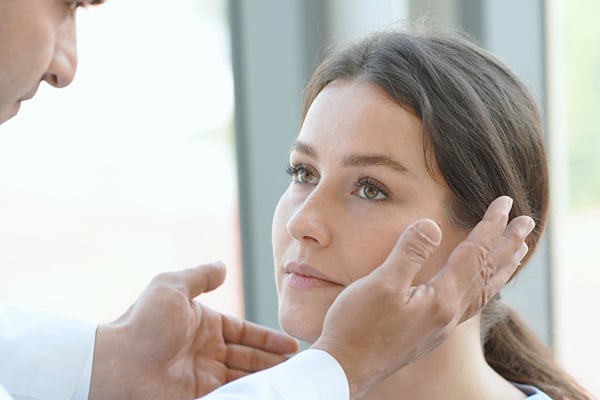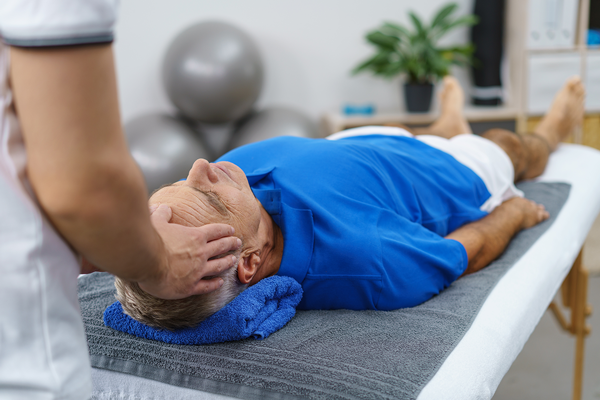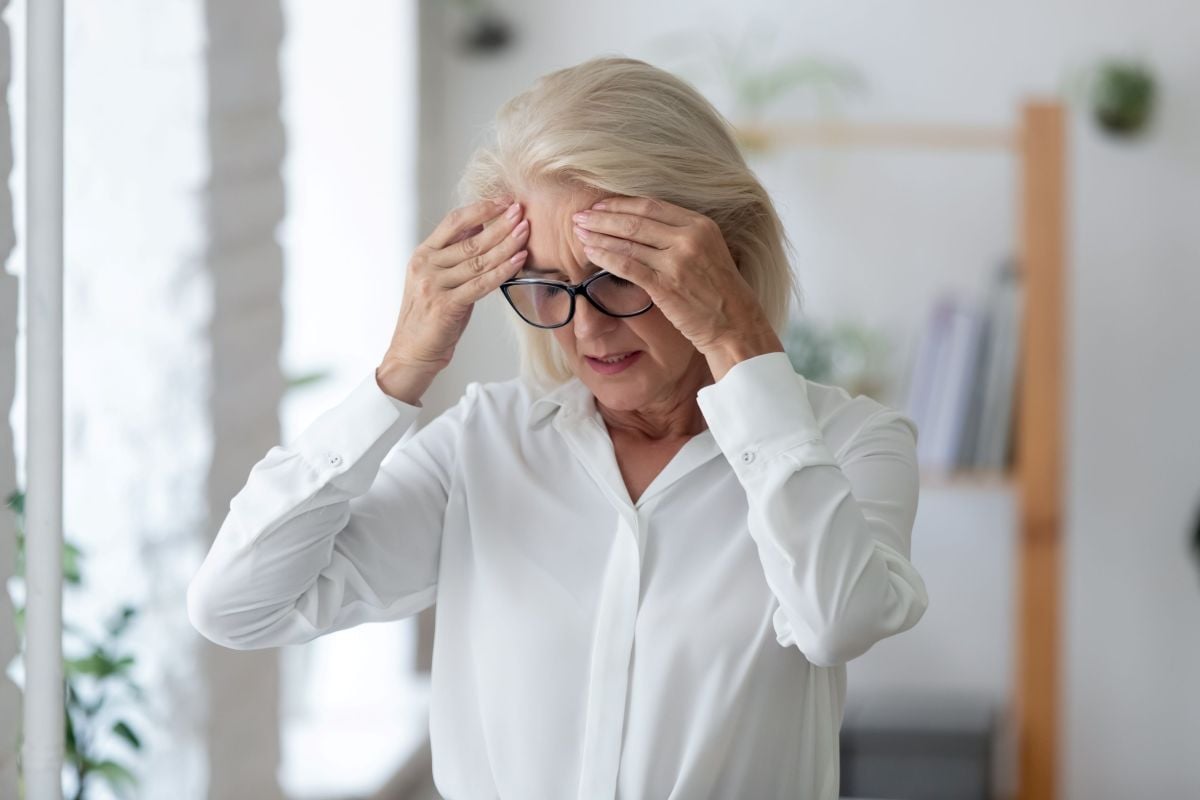
Dizziness can have psychological consequences
Persistent Postural-Perceptual Dizziness, or PPPD, is a vestibular condition previously referred to as Chronic Subjective Dizziness. People with this condition don’t feel a ‘room-spinning’ type of dizziness or have trouble focusing during head movement like many people with vestibular problems experience. Instead they may feel:
- Heightened sensitivity to busy or moving visual environments, like a crowded mall/supermarket, heavily patterned carpet, scrolling on the computer, or watching an action movie;
- A sense of unsteadiness or swaying/veering when on their feet (not necessarily noticeable by others);
- A feeling of their head being “off” or just not quite right in a way that is difficult to describe;
- Difficulty with scenarios where it is harder to use vision or the feeling of the ground for orientation, such as being in a darkened environment or on uneven/unstable surfaces. Things like walking down the sloped aisle to find a seat in a dimly lit theatre, or walking on the grass at night.
Symptoms tend to worsen as the day progresses but may fluctuate or ‘come and go’ momentarily.

There is no specific test for PPPD but to fit this diagnosis, the following should apply:
1. The symptoms described above have been experienced for at least three months;
2. Symptoms are present on at least half the days of the month. (Most people report daily symptoms);
3. Symptoms typically worsen with:
a. being upright as opposed to lying down
b. the head or body being in motion
c. being in environments where there is a lot of motion or pattern
4. The disorder typically develops following a medical event(s) causing dizziness or unsteadiness, such as a vestibular problem, certain types of migraine, head/neck trauma like concussion or whiplash, stroke, panic attack, heart problems, or an adverse reaction to a medication.[Staab JP. Chronic Subjective Dizziness. Continuum (Mineapp.Minn.). 2012 Oct; 18(5 Neuro-otology):1118-41.]
Even if there is evidence of a past medical event to explain the onset, with PPPD it is no longer that past medical problem that is likely responsible for current symptoms. Dizziness may make the brain think that there is some sort of threat, causing a person to pay even more attention to their motion or the motion going on around them, particularly if predisposed to PPPD because of anxiety-related personality traits. The brain can sometimes pay too much attention to these factors, and that heightened awareness can ‘take on a life of its own’ and become distressing enough to interfere with a person’s day-to-day function.
While anxiety or depression may increase a person’s susceptibility to PPPD, or be present in the majority of those with PPPD, this condition is not to be confused with a mental health disorder. However, PPPD can have psychological consequences if a person starts to avoid leaving one’s home or becomes fearful as a result of the symptoms.
If you think the description of this condition sounds like what you are experiencing, here is a link to the diagnostic criteria1 that you can take to your Doctor to discuss.
Treatment:
Vestibular rehabilitation and balance therapy has been shown to help with PPPD. This treatment approach typically includes education, gentle exposure to provoking movements or scenarios, a graduated plan for getting out into busier environments, exposure to visual stimulation, and balance challenges – all with a lot of recovery breaks! This treatment approach can help reduce sensitivity to visual or self-motion and build balance confidence so that the brain can ‘let its guard down’. Ironically, it is often exposure to the things that trigger one’s symptoms that actually resolves them over time.
Vestibular rehabilitation has been shown to:
- Reduce symptom severity by 60-80%
- Increase mobility and normal daily function, and
- Possibly reduce anxiety and depression.
Progress may be slower than with other vestibular conditions, and people may have to work at their exercises for longer, i.e. a three to six-month period. [Staab JP. Behavioral aspects of vestibular rehabilitation. NeuroRehabilitation 2011; 29(2):179-183] Anti-depressant medication can also be helpful, as can counseling, however research suggests that counseling should be started within two months of the triggering event in order to have long-standing benefits. Activities to help foster balance and relaxation like yoga or tai chi may also be helpful.
The following publication from the Vestibular Disorders Association has additional information on PPPD: http://vestibular.org/sites/default/files/page_files/Documents/PPPD_CSD.pdf
Lifemark clinics have experienced vestibular therapists who are trained to assess and treat many dizziness and balance disorders, including PPPD. For more information or to find a therapist near you visit www.lifemark.ca/services/dizziness-balance
Click here to watch a series of videos on the vestibular system, the most common causes of vertigo, dizziness and balance issues, and how to find relief: http://bit.ly/2A0V3k1







